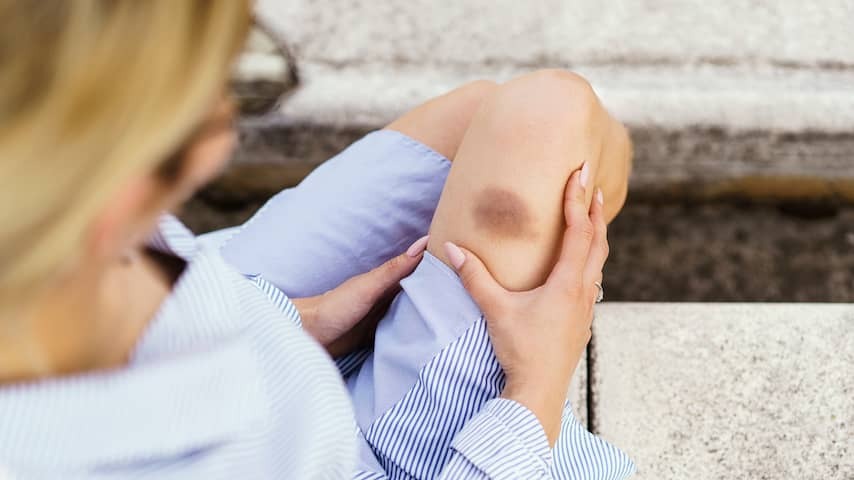
Do you also bump into everything, or do you have to move slightly somewhere and do you already have a bruise? Hematologist Karina Meijer explains to NU.nl how it is possible that one gets a bruise much faster than the other.
Where does that blue color actually come from? “A bruise is a subcutaneous blood shedding,” says Meijer. “The blue color occurs when blood vessels break down and the blood comes out of those vessels in tissue. That shines blue.”
A bruise slowly sinks through gravity. And then the color can also change. “A place that stays on your knee for a long time, then slowly sinks over your calf to your ankle and changes from blue to a yellower color at that time.”
That way your bruise will disappear. According to Meijer, that is not a matter of healing, but rather to clean up. “The blood below the place where you bumped into somewhere. Your body cleans up that blood automatically, and because of that process the place of color changes.”
It may indeed be that one gets a bruise faster than the other, the expert says. “That is possible because someone has a more vulnerable and thinner skin. If you bump, it will make it easier to break blood vessels.”
Not surprising if the bruise remains visible for a long time
Yet Meijer thinks that one is mostly faster under bruises than the other because that person bumps more often. She sees that most bruises arise in places that you can easily bump into something, such as walking your legs against the corner of the table for the umpteenth time. And in the summer bruises simply stand out, because you go out faster with bare legs.
Does that bruise remain visible for a long time or does the place feel very hard under your skin? All very normal, says Meijer. If you suddenly get bruises in places where you don’t bump at all, then that is unusual. “Or if you suddenly see many more bruises appear.” In those cases she recommends going to the doctor.
Do you also bump into everything, or do you just have to move lightly fits something and you already have a Bruise? Hematologist Karina Meijer Explains to nu.nl How it is that one person Gets a Bruise much faster than Another.
Where does that blue color actual come from? “A Bruise is a subcutaneous hemorrhage,” Says Meijer. “The Blue Color Occurs When Blood Vessels Break and the Blood From Those Vessels Ends Up in Tissue. That Shines Through Blue.”
Due to Gravity, A Bruise Slowly Sinks Away. And then the color can also change. “A spot that stay on your knee for a long time, for example, slowly sinks about your calf to your ankle and changes from blue to more yellowish color duration that time.”
That’s how your bruise disappears. Accordance to Meijer, this is not a matter of healing, but rather or cleaning up. “The Blood Under the Spot Where You Bumped Yourself Has To Go Somewhere. Your Body Clears That Blood Automatically, And Through That Process The Spot Changes Color.”
It may indeed be that one person gets a bruise faster than another, says the expert. “That may be because some has more vulnerable and thinner skin, for example. If you bump yourself, you Will Break Blood Vessels More Easily.”
Not Crazy If the Bruise Remains Visible for a Long Time
Yet Meijer Thinks That One Person is more prone to Bruises than Another because that person bumps Themselves More Often. She sees that most bruises occur in places where you can Easily bump into something, such as running your legs against the corner of the table for the umpteenth time. And in The Summer, Bruises Are Simply More NoticeBey
Does that Bruise Remain Visible for a very long time or does the spot feel very hard under your skin? All Very Normal, Says Meijer. If you Suddenly Get Bruises In Places Where You Don’t Bump Yourself At All, That Is Unusual. “Or if you sauddenly see a lot more Bruises Appear.” She advises to go to the family doctor in those cases.